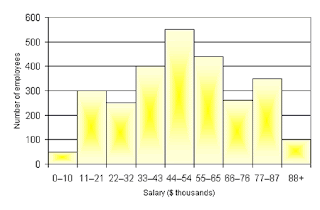Steam and Leaf plot
A stem and leaf plot is a graphical way to display statistics and gives the reader a quick representation of the distribution, shape and density of the data. In statical terms, the mode and outliers are easily identified by just looking at the chart. Stem and leaf plots, like the one above, uses the first significant digit as the "stem", divided by a line, and the second significant digit as the "leaf." Each stem is only listen once, but a leaf digit could be repeated if a number is duplicated.






